HONDA TALON VS. POLARIS GENERAL
Honda's Talon 1000X-4 takes on Polaris General XP4
HONDA VS. POLARIS: Performance meets supreme comfort By the staff of Dirt Wheels

HONDA TALON VS. POLARIS GENERAL
At first glance, a comparison between a sport machine like Honda’s Talon 1000X-4 and a sports recreation model like the Polaris General XP 4 Deluxe might seem somewhat odd and perhaps even ill-advised. But, as we looked a little closer, it started to look like a natural comparison.
Although it wasn’t one of the facets that prompted the comparison, both machines are new models for 2020. Certainly, General 4 has been around for several years, but the General XP is a new animal despite sharing a body with General 4.
WHAT’S THE SAME?
To begin with, both machines are powered by naturally aspirated, 999cc, vertical, twin-cylinder engines. The Honda has a Unicam with the cam operating the intake valves directly, but the exhaust valves via rocker arm, while the Polaris uses the familiar dual-overhead-cam design.
Both are considered “over-square” engine designs with larger bores than strokes, and of the two, the Polaris has a 1mm-larger bore with an accompanying shorter stroke. Polaris claims 100 horsepower and the Honda 104 ponies.
While the General has a relatively simple CVT to transmit power, the Honda uses a sophisticated, 6-speed, dual-clutch gear-to-gear transmission. Like the CVT, the Honda transmission has an automatic mode, but it can also be shifted with paddle shifters mounted behind the steering wheel. Even when the transmission is in one of the auto modes, the driver can override the computer-selected gear by using the paddle shifters.
Honda also uses Electronic Brakeforce Distribution instead of a typical diff-lock. Conversely, the General has no manual differential lock, but it does have an auto-locking feature that engages the front wheels any time the rear wheels slip. It also has a Turf mode that unlocks the rear differential for pavement work or for driving on delicate surfaces.
HONDA TALON VS. POLARIS GENERAL
Both machines are very close to many critical dimensions and specifications. Wheelbase and track width are similar, with the Honda being a touch longer. Suspension travel and design are pretty similar, with 14.4 inches of front travel for the Honda with Fox QS3 shocks and 14 inches from the General with Walker Evans Velocity shocks that have more compression adjustments. In the rear, the Honda has 15 inches of travel, while the General has 14 inches of travel.
Shock preload is infinitely adjustable on both machines. The Honda’s Fox QS3 shocks have only three compression-adjuster settings. The changes between each setting are easy to feel, and they are easily accomplished without tools. Walker Evans shocks on the General offer more compression settings, but we generally made adjustments in two- or three-click jumps (also without tools) so we could feel the difference.
MAKING ADJUSTMENTS
Both machines come with 15-inch wheels, but the General XP line comes with 30-inch Pro Armor Crawler tires, while the Honda sports 28-inch Maxxis rubber. As a result, Honda has less ground clearance. We adjusted both the tire size and the clearance by adding 30-inch Fuel Gripper tires and Fuel Beadlock rims.
We hoped that the added clearance would help and that the taller sidewalls and larger rolling diameter of the tires would aid ride compliance. Since there is a $3000 retail price difference between the Talon and the General, we felt justified making some changes.
While speaking of the price difference, the General has full doors, a dump bed, and a standard winch. It also comes with the Ride Command package, which adds a built-in GPS with a touchscreen, a radio (with an antenna for over-the-air reception where available), speakers, front and rear cameras, and a variety of other features.
If the Honda was equipped to a similar level, the price would be a wash. All of these additions add weight, though, and the General has just over 300 pounds of weight penalty compared to the leaner Honda.
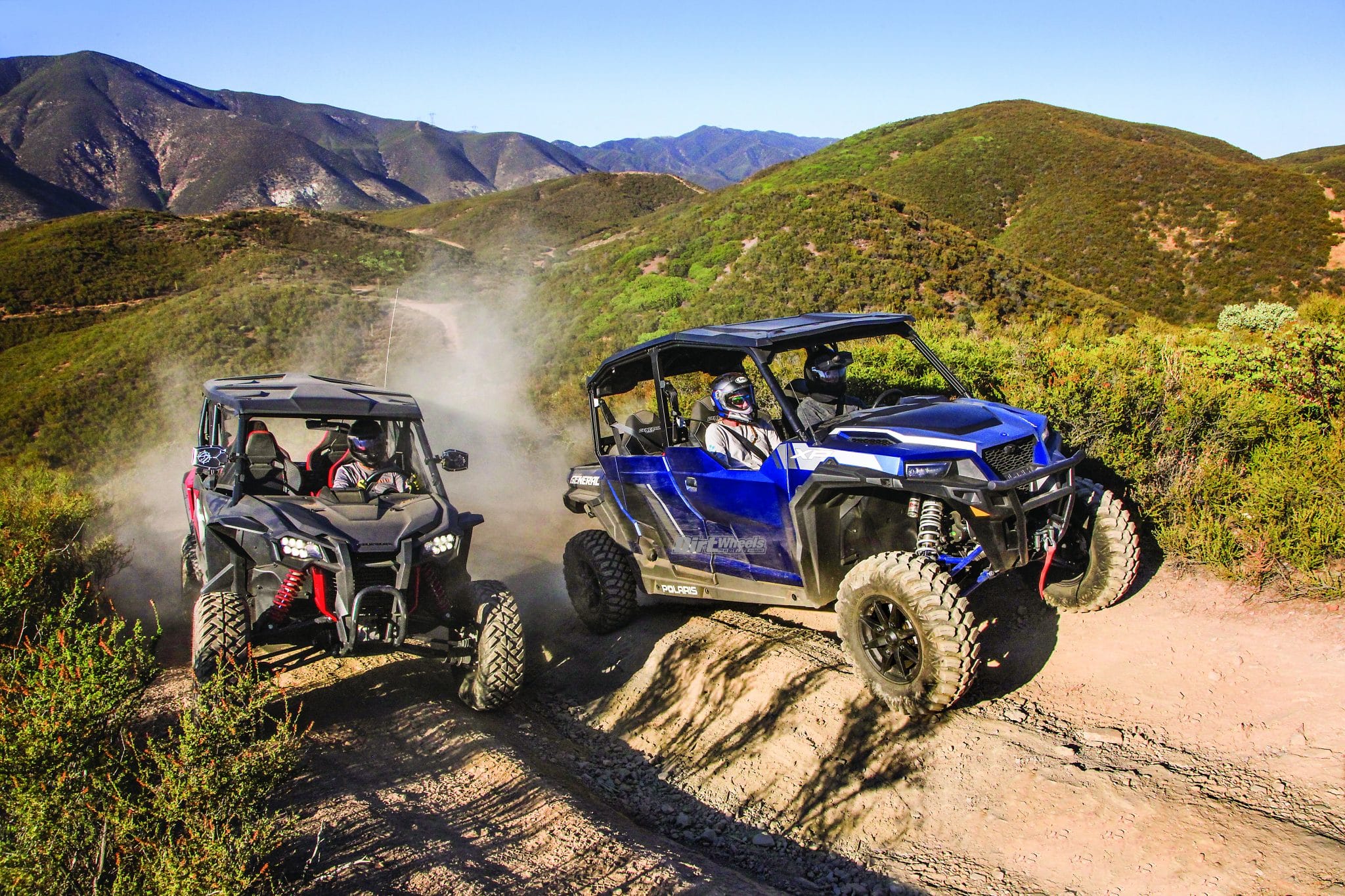
HONDA TALON VS. POLARIS GENERAL
TRADING SPACES
When it comes to interior room and comfort, we are looking at a pair of winners here. Honda has a stellar record paying attention to the human interface between the end-user and the mechanical aspects, and the Talon doesn’t disappoint. It has comfortable yet supportive seats, and just enough legroom for drivers over 6 feet tall, but nothing extra.
We were able to get tall passengers in the rear seats as well. We like the gated shifter, and the other controls work well. Polaris has had some criticism of ergonomic arrangements on some model lines, but the General hasn’t suffered the same fate. The cab and seats have always drawn well-deserved praise. Starting with the molded plastic half doors, they are two halves that are mated.
On the inner side of the door, it is smooth and finished like an automobile. All four seats are comfortable and supportive with an upright feel that we like. Sitting upright aids vision forward. There is plenty of interior storage, including roomy center consoles with padded armrest lids in the front and rear.
Both machines come with standard center-mount rear-view mirrors. The General’s mirror is larger, and it is bolstered by a rear-view camera. It turns on automatically when you shift into reverse, but you can use a button on the touchscreen to turn it on and leave it on. The General also has a front look-down camera for picking lines in technical driving.
Both machines have standard three-point seat belts, but you feel safe in both cars, thanks to tall doors on the General and window nets on the Talon. The Talon seats do come stock, with pass-through openings for four- or five-point harness-type belts to be added.
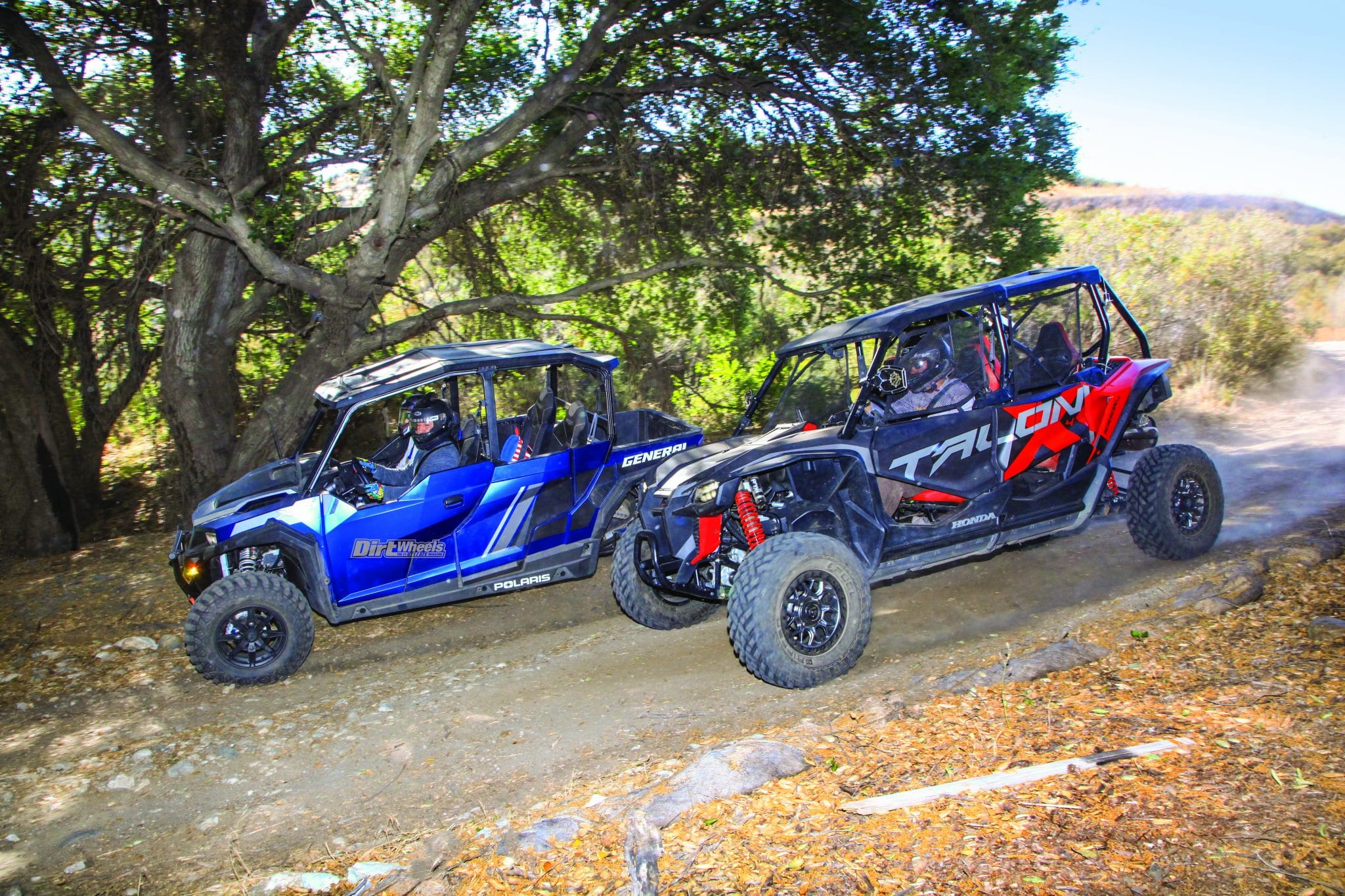
DO THEY HAUL?
Honda equipped the Talon with a compact bed, but it is open at the rear. There are tie-down points to secure cargo. The General bed is larger, and with an opening tailgate, it is easy to carry gear safely, and there are tie-down points as well. The Talon shares basically the same engine and transmission architecture as the Pioneer 1000.
Towing is allowed for the Pioneer, but not for the Talon. All of the General models, and that includes the XPs, are able to tow and come stock with a 2-inch hitch receiver capable of towing 1500 pounds. The only towing we did was moving some trailers around, but it handles the load just fine.


HONDA TALON VS. POLARIS GENERAL
OUT ON THE TRAIL
When you actually get both cars off of the trailer and onto trails, you find that numbers don’t tell the whole story. As similar as these machines look on paper, they are quite distinct in the real world. Honda’s DCT transmission employs great modern technology to do away with a CVT and, most importantly, too many minds, the CVT drive belt. Every UTV or 4×4 quad off-road fan has feelings—often strong feelings—about the CVT and belt drive.
If you are one that feels no high-performance machine should be motivated by a glorified rubber band, then you will be a DCT fan. While the DCT does have an Auto mode, it is still different than the seamless automatic ratio changes that a CVT offers. Honda’s DCT offers instant and solid engagement for motivation, and engine braking that is just as instant and connected for deceleration.
It is particularly abrupt in reverse, and when backing the Talon from a trailer (or onto one) or when backing in technical terrain, we hold the brake to soften the engagement and aid control.
Engine sounds, and the gear-to-gear engagement, are agreeable and add a sporty feel that CVTs don’t provide. We suspect that the DCT loses less power between the crankshaft and the wheels than a CVT does. The 4-horsepower-claimed performance difference doesn’t account for the difference in snap and acceleration. We know that a 300-pound difference has a significant performance penalty, but the Honda is livelier than even the weight difference would explain.
SNAPPY OR TECHNICAL
It is snappy right at gear engagement, and it accelerates with authority. Honda also gave the Talon a shorter gas-pedal throw as well.
It isn’t that the General is slow, but it has a long gas-pedal throw. To stay with the Honda’s pace, you must stay deep in the pedal travel, so it feels like a greater performance difference than it really is. That same pedal travel makes the General a breeze to drive in technical terrain. It is almost relaxing after the lunges and snaps of the Talon. There is none of the vigilance required for reverse, either. The CVT is smooth and capable at all times, and it never gave us any issues.
One area where the DCT is clearly convenient is when you use low range. In low range, the DCT still has six forward gears, so it allows the Talon to stay in low range for a greater range of terrain. On a rolling trail segment with steep climbs and drops, we simply left the Talon in low and drove.
The General worked great as well, but we shifted from low to high range roughly 10 times. Each time we had to come to a complete stop. If you aren’t in a hurry, no foul.
We worried that the larger tires might cripple the Talon on steep and rough climbs, but it got along fine in low and high range.

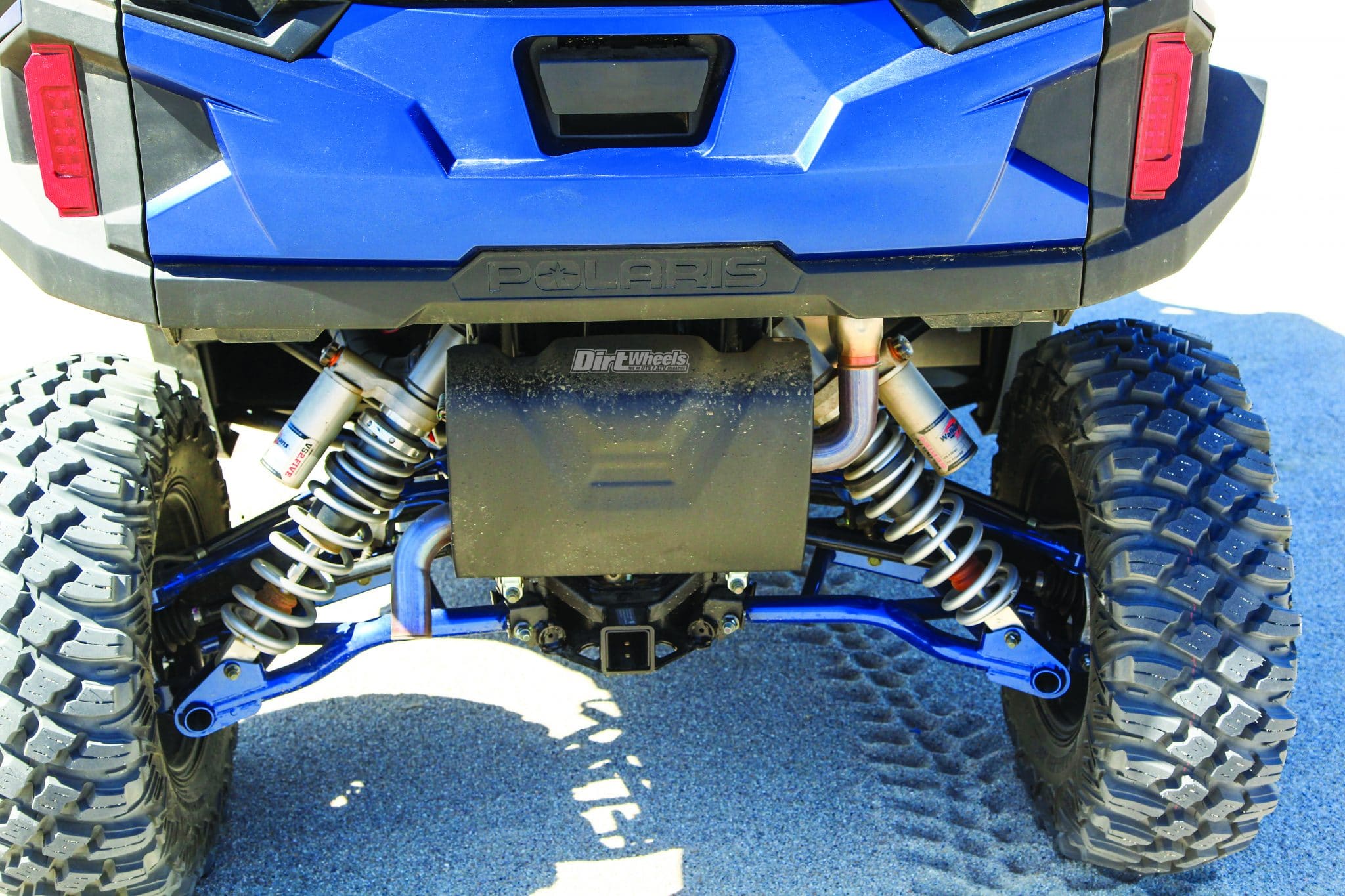
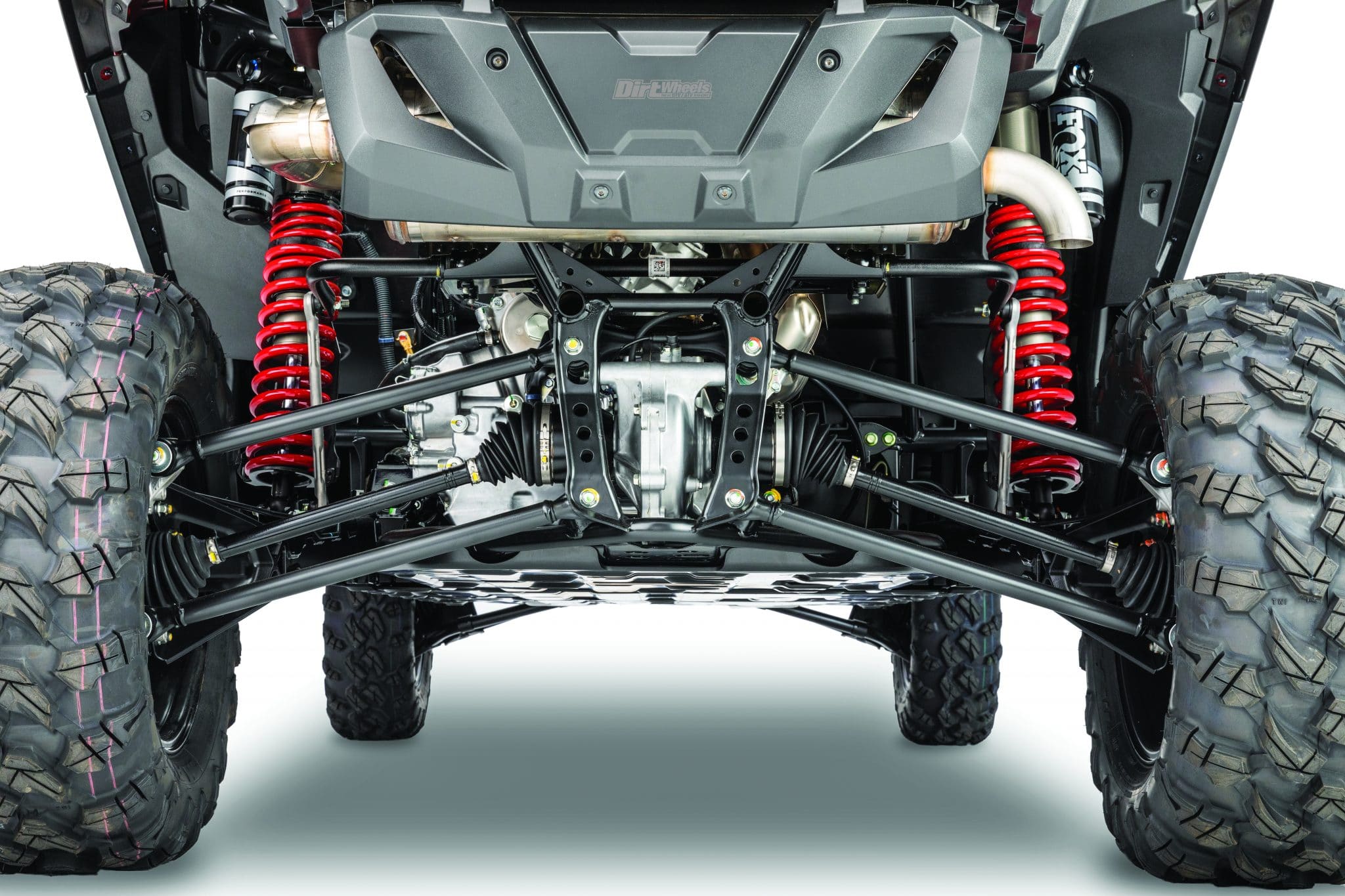
HONDA TALON VS. POLARIS GENERAL
GET ON THE BUS, GUS…
When the going is fast and relatively smooth with rolling bumps, the Talon is pretty happy and very quick and fun to drive. We chose a test area that has some smooth and quick roads and two-tracks, but they are separated by trails that are jam-packed with loose and solidly buried rocks that do not move. If the wheels don’t move for the rocks, your kidneys will.
You can definitely slam things harder with confidence in the Talon, but even with the larger tires at 15 psi, the ride is extremely rough. For our test loop, the Talon 4 Live Valve would have fared better against the General. It has a similar price, and the computerized Fox shocks handle extreme chop better. For whoops and fast driving, the Talon has an edge, but don’t expect comfort and compliance from the ride.
Things are polar opposite with General XP 4. We have driven few, if any, machines with 14 inches of travel that offer the level of comfort that the XP does. For our rocky test trails, switching to the General was a treat. In-cab comfort in all trail conditions was significantly better than the Talon set on position one, the softest setting possible.
We did find that you soon avoid slamming the General front end into deep dips or abrupt ledges. It doesn’t upset the car, but you can tell that it doesn’t like it. We stiffened the front shocks three clicks. That helped big hits without compromising the ride in rocks.
Where we might throttle through whoop sections with the Talon, we didn’t with the General, unless they were pretty mild. It doesn’t swap or get crazy, but it doesn’t ever get up on top of the bumps, either.

AT THE LIMIT
We have driven both machines with every seat filled. Both handle that sort of use well. Passengers over 6 feet tall like the rear of the General better, but our tallest folks rode on the back seat of both machines without problems. The same was true of carrying some gear along as well.
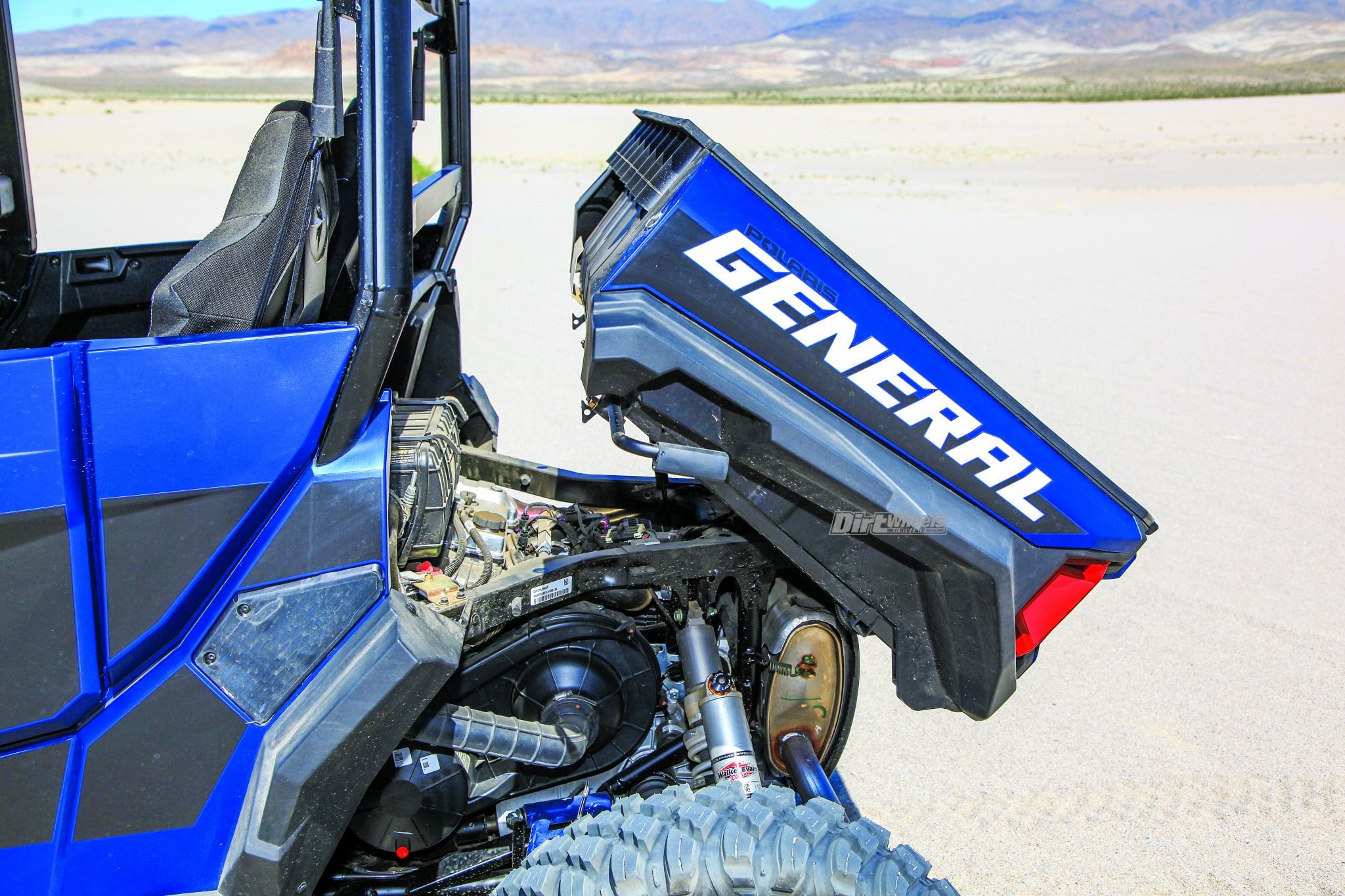


WRAPPING UP: HONDA TALON TAKES ON POLARIS GENERAL
We learned a long time ago that you need the right tool for the job. In this case, you need the correct job for the tool. Both of these machines are well-engineered, capable, and ready for duty. For fast and quick driving or even sand dunes, sign us up for the Talon to claw the trails. For trail work and trail exploring, the General is the commanding officer. It has that great suspension compliance, excellent cab comfort, and GPS to get you there and back. If you mess up, there is a winch to get you out of trouble. Choose your weapon.
UTV TEST: 2020 POLARIS GENERAL XP 4 1000 DELUXE
To subscribe to Dirt Wheels Magazine in print or digital form click here https://hi-torque.com/product/dirtwheels.




Comments are closed, but trackbacks and pingbacks are open.